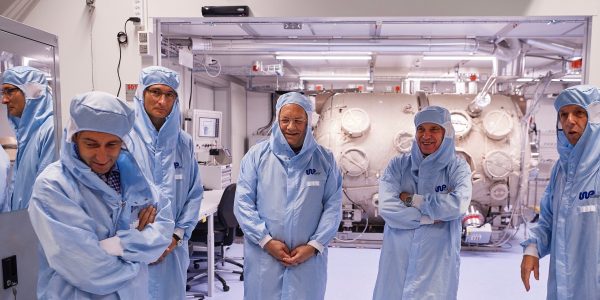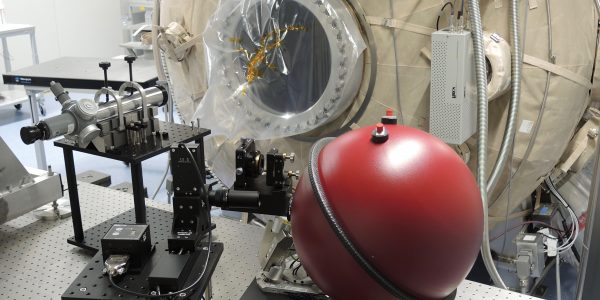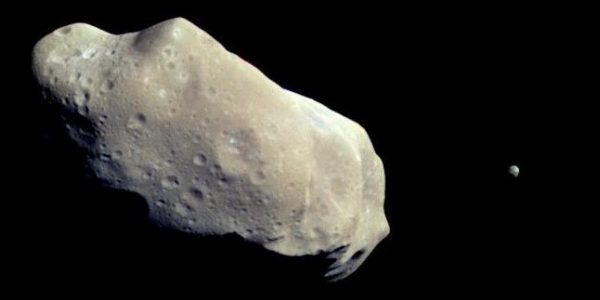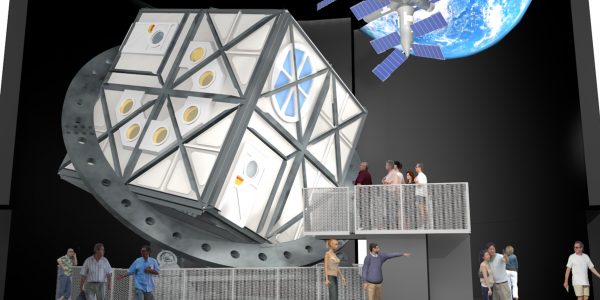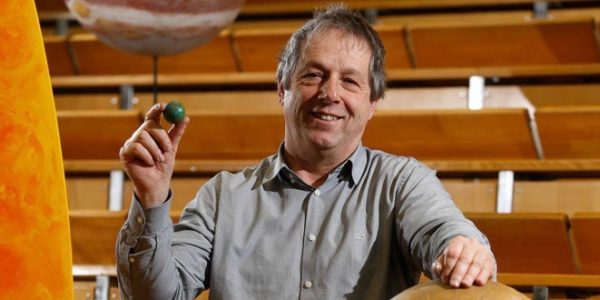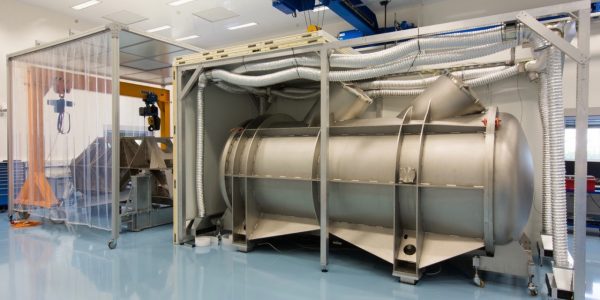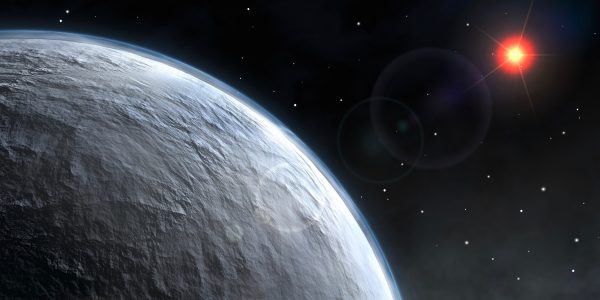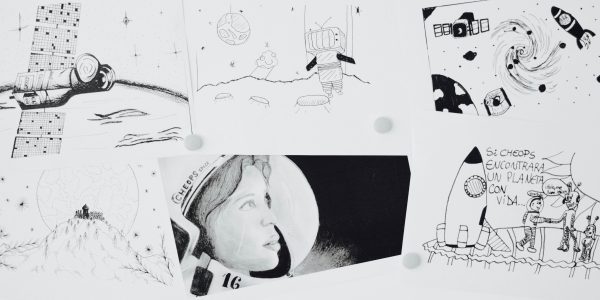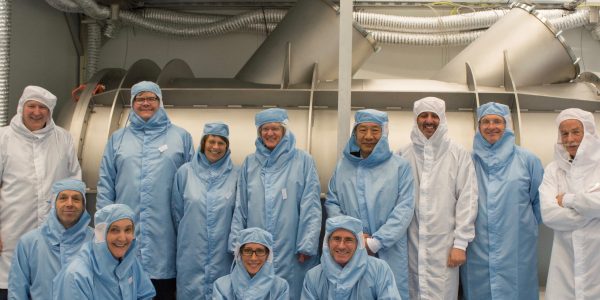External Newsletter
Swiss Government in the Clean Room
To kick of their annual “school trip” in summer 2016 all seven members of the Swiss Federal Council visited the University of Bern. The professors Willy Benz, Kathrin Altwegg and Nicolas Thomas presented their space projects: the space telescope CHEOPS, the Rosetta spectrometer ROSINA-RTOF and the mars camera CaSSIS. For entering the CHEOPS laboratory the […]
Continue ReadingTest of the CHEOPS CCD
This interactive page describes the different elements of the optical bench to test and calibrate the entire optics of the CHEOPS space telescope including the CCD detector. The photo was taken in the clean room of the Physics Institute of the University of Bern and the diagram shows the optical path of the installation. To […]
Continue ReadingThe sky is full of moons
On the 5th of September 2016, the Minor Planet Center reported that a small moon is in orbit around asteroid (6016) 1991 PA11. This newly discovered companion is actually just one of many such objects. By Adrien Coffinet The Moon, with a capital “M”, has since long ago been known to orbit the Earth. However, we had […]
Continue ReadingPrepare for Lift-Off with the Space Transformer
On 24 November 2016 the completely redesigned permanent space exhibition at the Museum of Transport in Switzerland will open its doors to the public. “Space – The Exhibition” is designed so that visitors can experience a predetermined course through various areas and adventure experiences relating to the theme Space and Space Exploration. The exhibition was developed […]
Continue ReadingReporting on our activities
Dear Reader, The beginning of the presentations of our activities to the international expert panel and Swiss National Science Foundation (SNSF) representatives marks the end of a year-long preparation process. While PlanetS enjoys significant freedom in its organisation and priority setting, reporting on our activities is an essential element in our yearly cycle. This takes the […]
Continue ReadingESPRESSO
ESPRESSO, the new very high-resolution spectrometer built under the direction of the Astronomy Department of the University of Geneva, is in its integration phase in the new observatory building clean room, inaugurated on 27th June. Take a virtual visit.
Continue ReadingHow planetary age reveals water content
Water is necessary for life as we know it, but too much water is bad for habitability. Therefore, to study the habitability of extrasolar planets, determining the abundance of water is a key element. Yann Alibert, Science Officer of PlanetS, shows that the observation of exoplanets at different ages can be used to set statistical […]
Continue ReadingThe Universe from a Child’s Perspective
“The Universe provides ample scope to use one’s own imagination,” says Anna Lehninger. The art historian investigates children’s drawings as a cultural asset and has had a look at the pictures resulting from the drawing campaign carried out in association with the CHEOPS mission. In early 2018, 3000 drawings will be sent with the CHEOPS […]
Continue ReadingTop Marks for PlanetS
Once a year renowned experts evaluate the scientific quality and the progress made in every Swiss National Centre of Competence in Research (NCCR). After a two-day exam at the end of May at the Geneva Observatory the review panel was highly impressed by the activities of the NCCR PlanetS. The yearly site visit of the […]
Continue ReadingLooking for our interstellar roots
Maria Drozdovskaya wants to know what our „astrochemical ancestral tree“ looks like. The incoming Fellow of the Center for Space and Habitability (CSH) at the University of Bern has just won a prestigious award that she will bring to her new host institution: The Gruber Foundation (TGF) Fellowship. It is one of the oldest and […]
Continue Reading
